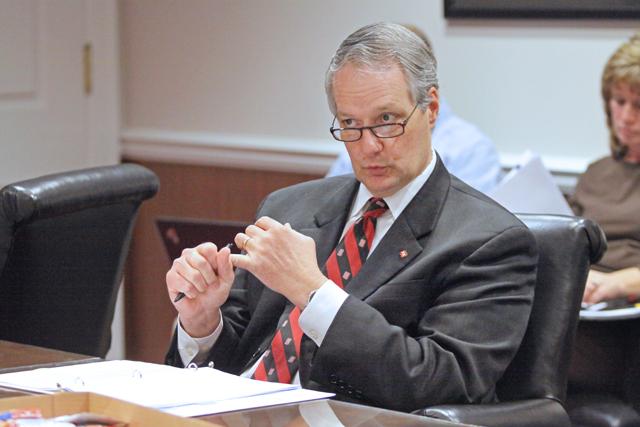The UBAC met Wednesday today to talk about what’s expected to be a rocky financial patch for the University.
Atop the list of priorities for the UBAC was its tuition increase proposal. The UBAC also discussed the looming budget cuts everyone is expecting to be substantial.
“We’re facing a time we haven’t faced at this University,” Charles Leffler,vice chancellor for finance and business, said.”People believed that after the last two years of cuts we would be back where we need to be [financially].
“But we should not at all delude ourselves. There is going to be another dip. How low will that dip be?” Leffler asked at the meeting in the Chancellor’s Conference Room of Holladay Hall.
The committee first announced its proposed tuition increase for the next academic year. While an increase is inevitable for all N.C. State students, the UBAC sought to protect in-state undergraduate students from the largest proposed increases.
According to interim provost Warwick Arden, Chancellor Randy Woodson will go to the University Board of Trustees and recommend a cap of 6.2 percent, or about $300, on the tuition increase for in-state undergrads.
The proposal also called for approximately $600 increases for other student populations: in-state graduate students, and out-of-state undergraduate and graduate students. These increases are not subject to the same cap as the undergraduate hikes, Arden said before reminding everyone that this was a proposal, and nothing was set in stone.
“This [proposal] can be changed; it will likely be modified several times over the coming nine months,” Arden said.
Committee prepping for 10-15 percent cut
In addition to the proposed tuition increase, the UBAC also laid bare a stark reality: it is going to have to decide how to cut 10 to 15 percent from the next University budget.
There will inevitably be some programs pared down or cut, said Leffler. “Nothing is off the table,” he said.
The UBAC will be more able to prioritize budget issues when it finds out the exact numbers on the next budget, Leffler said.
“The question is how far north of 10 percent might [the budget cut] be? We really have to be prepared for a 15-percent scenario,” he said.
When the UBAC refers to “programs,” it is not exclusively referring to academic programs, Arden said.
As the UBAC considers what it could cut, “we will favor the academic core of the university,” said Arden. “We’re at a point with class size and faculty reduction, that if we reduce them anymore it will significantly affect the way we currently do business.”
Arden said students will come first, and their resources will be cut last, as the UBAC considers potential budget reductions.
“Seats in classrooms, sections available for students, faculty positions; students are first and foremost in the Committee’s minds as they try to trim the budget,” Arden said.
Leffler stressed that this was just the first stage of the discussions surrounding next year’s budget.
“This is a budget reduction planning process, not an implementation, because we have a lot of research to do before we decide where we can reduce,” Leffler said. “There will be several more iterations of this [reduction] plan.”








